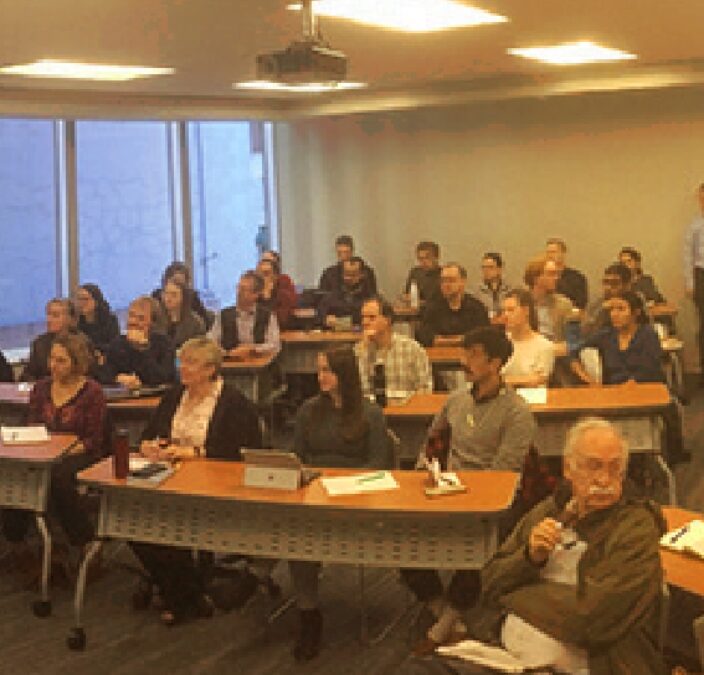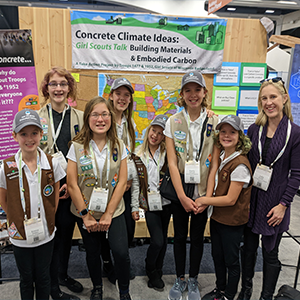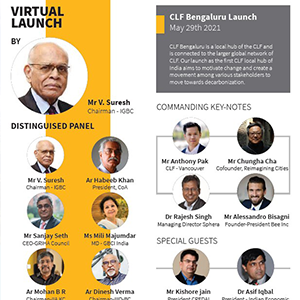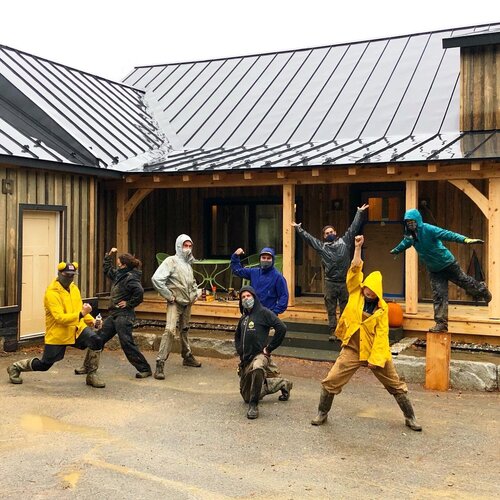Wood Carbon Seminars: A CLF Learning Series
by Monica Huang
Research Engineer, Carbon Leadership Forum
In April 2020 we launched the Wood Carbon Seminars, an 8-week webinar series that invited wood experts to answer the building industry’s common and critical questions about wood carbon. Over 400 people registered to receive access to the webinars, with 100-200 people attending each session. These numbers exceeded our initial expectations, but perhaps we shouldn’t have been surprised, given the building industry’s growing interest in using mass timber and other biogenic materials in buildings.

Why did we launch the Wood Carbon Seminars and what did we learn from it?
How it began
Leading up to the release of the Embodied Carbon and Construction Calculator (EC3 tool) in November 2019, many wood experts pointed out issues with how we were presenting wood LCA data in the tool. We needed a crash course in wood, and if we needed it, then others probably did, too.
Over the years, we at the CLF have observed that sustainability-oriented AEC professionals were interested in using wood for its environmental benefits, but they were also wary of the negative consequences of logging and didn’t want to drive deforestation. We also heard again and again that designers wanted to understand how to specify wood that best promoted climate-smart forestry, but it was not easy to understand and use wood LCA data. Furthermore, wood experts were often frustrated by the frequent misconceptions about wood carbon and the forestry industry. Clearly, all of these issues were confusing to navigate and there was a need to bring clarification to the topic of wood carbon. The CLF, with its mission of education and outreach on embodied carbon and its connections to wood experts in academia and industry, was well-positioned to bridge the gap between the building industry and the forestry world.
In early 2020, the CLF developed the Wood Carbon Seminars with the help of the American Wood Council and Google, who were the main sponsors of the project and served on the advisory committee. The goal was to bring forest science to AEC professionals and help figure out how to present wood data in the EC3 tool. The advisory committee helped the CLF pick the speakers for the webinars corresponding to their area of expertise. This selection of speakers could (and did) lead to claims that there was a pro-industry bias in these webinars, but we asked the speakers to focus on the data so that the data could speak for itself.
And present the data they did.

Monica Huang
Monica Huang is a research engineer for the Carbon Leadership Forum at the University of Washington and Organizer for the Wood Carbon Seminars, with expertise in environmental life cycle assessment (LCA). Recent research topics include the environmental impact of housing, optimizing tall wood structures, and developing data on the environmental impact of earthquake damage. She was also the lead author for a guide on the use of LCA in design and construction practice. Past research experience includes diverse topics such as astronomy, electronic waste, and sea level rise. As a graduate student, she developed the Port of Seattle’s first study on the impacts of sea level rise on seaport structures.
What we learned
There was a wealth of information presented in these eight webinars, which were focused on North American forestry practices and wood products legally harvested from working forests (see the Notes section below). Here are some high-level take-aways:
In the first session (“Background and Basics”), we learned that forests in the U.S. have been re-growing steadily for the past hundred years following the end of the Industrial Revolution (see Cynthia West’s presentation). We also learned that some unmanaged forests can become overstocked, which leads to an increased risk of forest fires and disease. We learned that forest owners are incentivized to practice sustainable forest management because healthy forests last longer and produce more wood, so sustainable forest management is good both for the environment and forest owners (see Kent Wheiler’s presentation).

This figure shows that while timberland area (right) has remained fairly constant since the 1950s, forest stocks (measured by volume) have been gradually increasing over time (left). Produced by Mila Alvarez, U.S. Endowment for Forestry and Communities, available at www.usaforests.org, based on Oswalt et al 2019, from Kent Wheiler’s presentation.
“Empirical evidence and modeling studies of the U.S. indicate that demand for wood increases forested area [and] encourages more productive forest management.” – Reid Miner (see presentation)
“The atmosphere sees the greatest carbon benefit if we can grow the trees efficiently and quickly, find ways to store the wood products for LONGER than the rotation, and find ways to use wood in place of other products that use a lot of fossil fuels in their production and construction.” — Elaine Oneil

From David Diaz’s presentation
Q&A’s
During the planning stages of the Wood Carbon Seminars, we collected questions from the prospective audience to help us shape the content of the webinars. After the webinars commenced, we continued collecting questions from the audience and asked the speakers to write a response to as many questions as they could after the end of the webinar series. The result of this massive Q&A effort was: (1) a master list of approximately 160 questions answered by the speakers, and (2) a top 10 Q&A document, which contains the top ten most basic and popular questions curated by the CLF. We hope that these Q&A documents can be helpful to you, especially if you submitted a question to the speaker during the webinar series.
Q: What can concerned builders do to support higher carbon storage in forests and help keep forests as forests?
A: Use wood products more to encourage landowners to keep forests as forests and to manage those forests. Do a better job of using the wood you get. Ask for certification. Think local.
— Elaine Oneil, Pat Layton, and Edie Sonne Hall (from Top 10 Q&As)
Conclusion
These webinars only scratched the surface of a very complex topic. After all, each speaker only had 20 minutes to share a tiny fraction of their life’s work, and there are still many other experts that could have spoken on the topic of wood carbon. That being said, we hope you learned as much from the Wood Carbon Seminars as we did. Thank you to the speakers, the advisory committee, and the sponsors for making this webinar series possible.
To view all of the content, including videos, slides, and the Q&As from the Wood Carbon Seminars, you can go to https://carbonleadershipforum.org/projects/wood-carbon-seminars/
Notes
These webinars were focused on wood that is:
- Legally harvested within the U.S.
- Harvested from working forests, not from reserved/primary/old-growth forests.
Note that not all jurisdictions have the same laws about forest management, and many of the observations about forest management practices, data, and certification do not apply to tropical woods or forests outside of the U.S.





